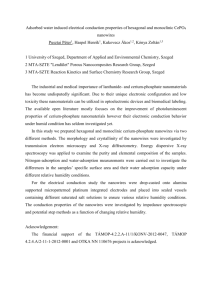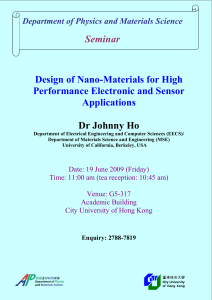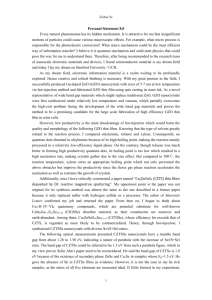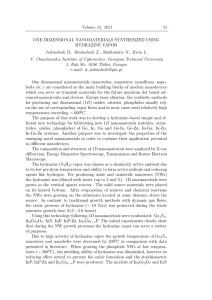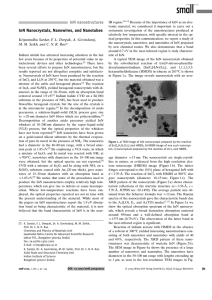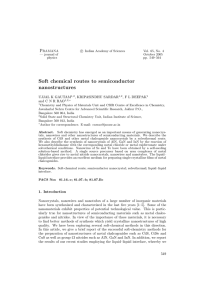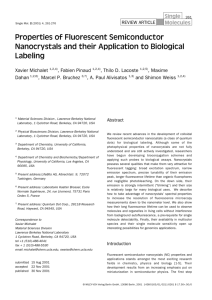My interest in materials dated from high school, when I found love
advertisement
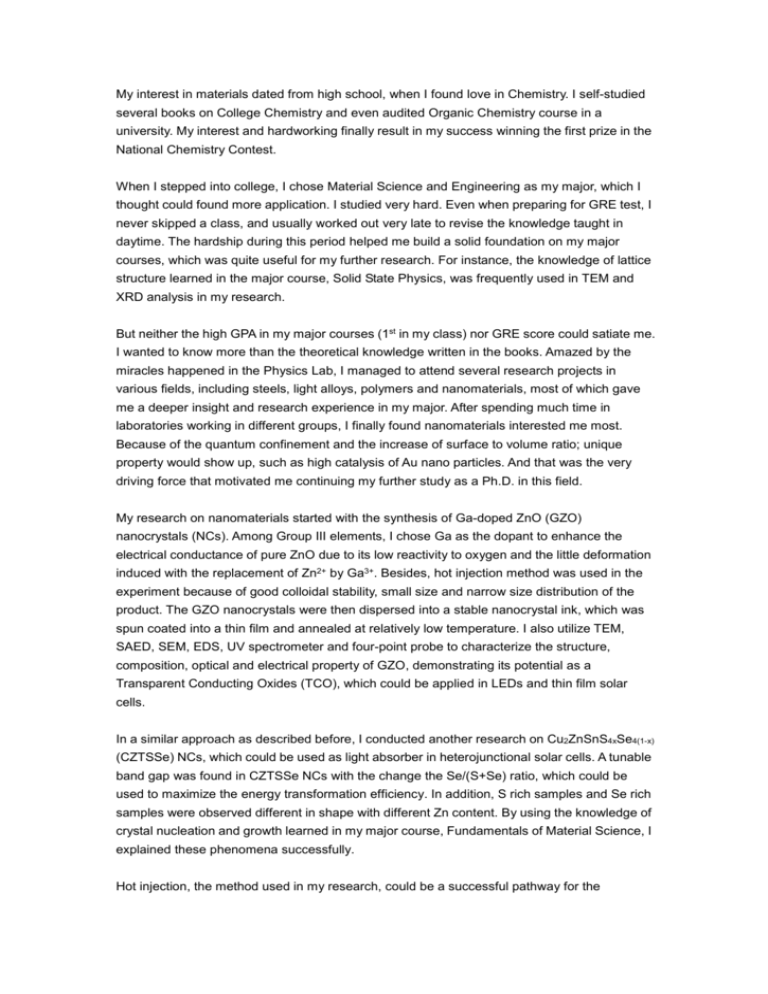
My interest in materials dated from high school, when I found love in Chemistry. I self-studied several books on College Chemistry and even audited Organic Chemistry course in a university. My interest and hardworking finally result in my success winning the first prize in the National Chemistry Contest. When I stepped into college, I chose Material Science and Engineering as my major, which I thought could found more application. I studied very hard. Even when preparing for GRE test, I never skipped a class, and usually worked out very late to revise the knowledge taught in daytime. The hardship during this period helped me build a solid foundation on my major courses, which was quite useful for my further research. For instance, the knowledge of lattice structure learned in the major course, Solid State Physics, was frequently used in TEM and XRD analysis in my research. But neither the high GPA in my major courses (1st in my class) nor GRE score could satiate me. I wanted to know more than the theoretical knowledge written in the books. Amazed by the miracles happened in the Physics Lab, I managed to attend several research projects in various fields, including steels, light alloys, polymers and nanomaterials, most of which gave me a deeper insight and research experience in my major. After spending much time in laboratories working in different groups, I finally found nanomaterials interested me most. Because of the quantum confinement and the increase of surface to volume ratio; unique property would show up, such as high catalysis of Au nano particles. And that was the very driving force that motivated me continuing my further study as a Ph.D. in this field. My research on nanomaterials started with the synthesis of Ga-doped ZnO (GZO) nanocrystals (NCs). Among Group III elements, I chose Ga as the dopant to enhance the electrical conductance of pure ZnO due to its low reactivity to oxygen and the little deformation induced with the replacement of Zn2+ by Ga3+. Besides, hot injection method was used in the experiment because of good colloidal stability, small size and narrow size distribution of the product. The GZO nanocrystals were then dispersed into a stable nanocrystal ink, which was spun coated into a thin film and annealed at relatively low temperature. I also utilize TEM, SAED, SEM, EDS, UV spectrometer and four-point probe to characterize the structure, composition, optical and electrical property of GZO, demonstrating its potential as a Transparent Conducting Oxides (TCO), which could be applied in LEDs and thin film solar cells. In a similar approach as described before, I conducted another research on Cu2ZnSnS4xSe4(1-x) (CZTSSe) NCs, which could be used as light absorber in heterojunctional solar cells. A tunable band gap was found in CZTSSe NCs with the change the Se/(S+Se) ratio, which could be used to maximize the energy transformation efficiency. In addition, S rich samples and Se rich samples were observed different in shape with different Zn content. By using the knowledge of crystal nucleation and growth learned in my major course, Fundamentals of Material Science, I explained these phenomena successfully. Hot injection, the method used in my research, could be a successful pathway for the synthesis of high-quality nanocrystals and of a large number of different materials, but still suffered from several defects, mainly the low yield of the final product and incontrollable chemical stoichiometry in mutli-element compounds. Some papers reported that di-n-pentyl phthalate (DPP) could be added in the solution to enhance the NC yield. Nonetheless, the removal of the surfactant around the NCs, which would lower down the yield, might still be a problem. In addition, to achieve controlled stoichiometry, different precursors as well as reaction condition needed to be tested, as the mechanism of the reaction was still not fully understood. The above mentioned problems were what I was trying to solve in my current research on rare earth element nanophosphors. Except nanocrystals and thin films, nanowires, which can exhibit amazing properties because of their low dimension structure, also attracted my attention. Intensive study on nanowires is needed to find a cost-effective way to synthesize them and an efficient way to utilize them. Currently, MOCVD process based on V-L-S mechanism has been developed to synthesize single crystalline nanowires with a controlled shape or pattern. Nevertheless, the catalysts will unavoidably influence the purity of the nanowires. The need of high temperature, sample uniformity, substrate choice, and low product yield are also the major problems in this field. In my opintion, solution-based synthesis, such as hot injection, might serve as the key to solve this problem. Shape control means, such as induced magnetic field, or the addition of NC seeds in the solution, might be used to facilitate this process. The study on self-assembly of the nanowires into optical or electronic devices, such as FETs and photovoltaic cells, might be the next step in the research. In sum, nanowire is a very promising yet not fully-developed field. Therefore, I wanted to attend a Ph.D. program to carry on my research interest relating this field and made even break-through discoveries. When it came to daily life, I often discussed with my friends on the hot topics in my interested areas, such as the synthesis of novel nanocrystals and nanowires. Sometimes I found even a short discussion with them could broaden my horizon, informing me new ideas that I had never heard of. By working with my colleagues, I did not only learn how to cooperate with other people, but also acquired the knowledge on the operation of several apparatuses, including SEM, EDS and UV spectrometer. Besides, when I felt free, I usually went to the library to read some books to help me better understand the fundamentals of nanomaterials. All of these would contribute significantly to my further Ph.D. study. To sum up, I truly hope to receive favorable consideration from the Admission Commitee in your esteemed university. It would be a great pleasure for me to join in your doctoral program to continue my further research.


